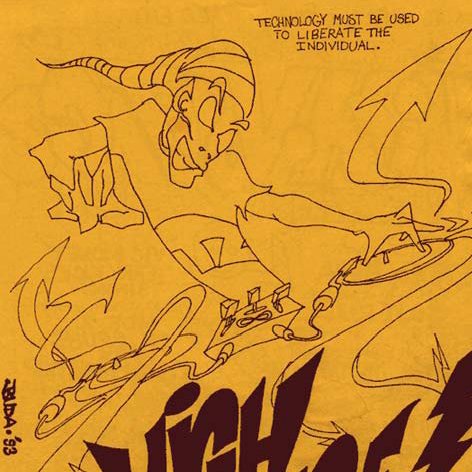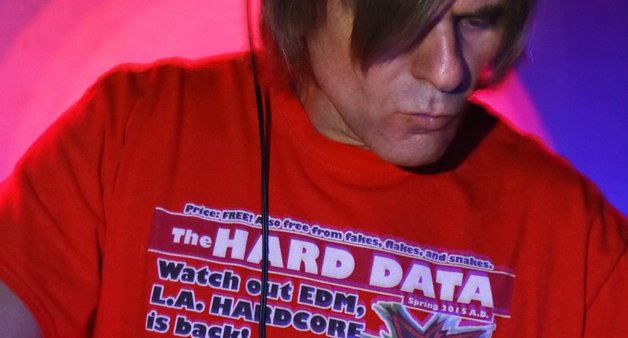The Hard Data is an electronic dance music magazine, both print and online, that focuses on several small sub-genres of EDM music. The Musicoin Foundation oversees the maintenance and promotion of a music-focused cryptocurrency called Musicoin. In August of 2017, the two entities endeavored on a pilot program to find out how Musicoin might positively effect a small music scene, and at the same time see if that scene would embrace Musicoin. The program lasted until August 31, 2017. This report was written on the evening of August 30, 2017.
The 31-day program consisted of the following aspects:
- The Hard Data would pay writers, photographers, web developers, social media sharers, and artists with Musicoin for the month, in an effort to familiarize the creative base of The Hard Data with the cryptocurrency.
- The Hard Data would encourage user sign-ups for Musicoin.
- The Hard Data would accept Musicoin for magazine subscriptions and t-shirt sales.
Results
During the pilot program, theharddata.com doubled its readership. Over 2,500 unique users visited thehardddata.com in August, only a little over 1,200 users had visited the site in June and July, respectively.
theharddata.com also greatly increased its flow of content.
23 unique articles were published on theharddata.com during the program, four posts were on its Steemit.com page, three posts were translated to Russian for Golos.io, and a press release and a unique Facebook photo album were uploaded to The Hard Data’s Facebook page. As of this writing, there are still a few articles and photos expected under the program that still need turned in and published after the August 31 deadline. However, the bulk of expected content (35 articles) was on schedule.
The type of content expanded.
During the program, several articles were translated by the community from English into the following languages: Russian, German, and Spanish. This was a new development for theharddata.com, and seemed instigated by the offer of Musicoin for the work.
Adoption of Musicoin by The Hard Data’s creative community was good, especially considering the vast majority of the community was only barely familiar with Bitcoin.
A total of 15 creative contributors were paid with Musicoin during the program, of those, and only four had ever owned a cryptocurrency previously.
During the program, the price of Musicoin tripled.
On August 1, Musiccoin was priced at about .015 USD, and rose to .048 USD by August 29. This of course intrigued the new adopters. However, many have not taken the required steps they would need to actually sell the Musicoin on Bittrex or Cryptopia because the process is still confusing to them.
During the beginning of the Pilot Program, the biggest hurdle was simply talking to potential users to get them to sign-up for an account and get in the system. About a week-and-a-half was spent focusing on this before the bulk of content could be created in the program.
Users were also paid to share content via social media.
This part of the program was less successful than the content creation in that not as many users signed-up for this task. This was perhaps because The Hard Data was primarily focused on content creation, and spent more time reaching out to those potential users. That said, by the time this article is read by the majority of the public, over 1,050 links back to content generated during the Pilot Program will have been shared on social media. So, the word got out none-the-less, but it would have been nice to have a larger number of users aggressively sharing the content.
67 New Users signed-up via The Hard Data’s sign-up link during the Pilot Program.
12 of these would release music on the platform. Two of these users also contributed to content on theharddata.com. So, of 67 sign-ups, 24 (36%) were active creators in some way to the music ecosystem facilitated by Musicoin.
0 subscriptions or t-shirts were purchased with Musicoin during the Pilot Program.
This was disappointing. However, there was no real online-shopping cart for users to make a purchase. Essentially, the purchase would have had to be made via Musicoin’s commenting interface built into musicoin.org, and would have required theharddata.com to comment back and then contact via email to complete the transaction. So, this aspect of the Pilot Program I believe is only a failure because of the technical handicaps and time constraints.
An unexpected result of the Pilot Program was that the first blockchain-enabled DJ mix was created, which garnered outside press on at least three well-known cryptocurrency websites and brought attention to Musicoin.
Pending Results
There are still a few loose-ends to tie-up to relevant to the Pilot Program. These pending results of the Pilot Program won’t have much directly measurable results with the public though, and as such were considered a secondary priority. Nonetheless, they are expected to be completed shortly.
These aspects currently in process are: a modified version of this report will appear in the print version of The Hard Data magazine. There are several jobs for the print issue that still must be finalized by its publication on September 21. Initially, the print magazine was scheduled for the last week of August. However, Insomniac Events—the USA’s largest EDM show producer—agreed to buy an ad in the upcoming issue, and the artwork will not be ready until the first week of September. I decided it would be best to delay the printing a week or two to facilitate the nation’s largest event company in the magazine’s space.
3.5 hours are still pending on web development tasks. The proposed tasks were integrating Musicoin with theharddata.com via API more directly, and streamlining various aspects of the site.
Conclusion
Obviously, I have a biased conclusion being the publisher of The Hard Data. However, I think the numbers support my view that the Pilot Program achieved important goals.
- It introduced users unfamiliar with cryptocurrency to accept the currency in exchange for services.
- Because content creators were paid, it doubled the readership of the site, and generated more, better, and wider-ranging content, expanding the music ecosystem with which the magazine and Musicoin was involved with.
- Musicoin tripled in price. Though the Pilot Program was not solely responsible for the uptick in price, it was an active and visible participant aggressively spreading the word of Musicoin’s adoption to crypto and non-crypto users, which was recognized by the crypto community.
Ultimately, I believe the Pilot Program demonstrates that Musicoin can have a profound impact on a small music scene and these techniques can be extrapolated to larger music ecosystems. It can be reasonably concluded that the only things delaying Musicoin’s greater adoption can mostly be solved by mere manpower. The Hard Data/Musicoin Pilot Program has established that non-crypto users will accept and adopt the usage of Musicoin in exchange for services and listening to music.













